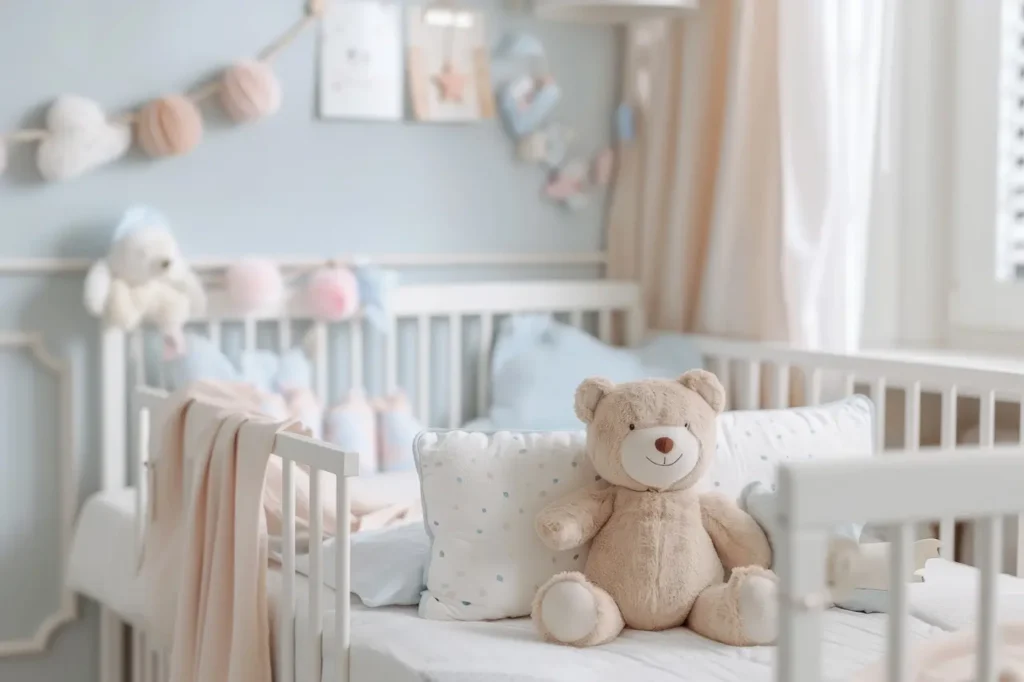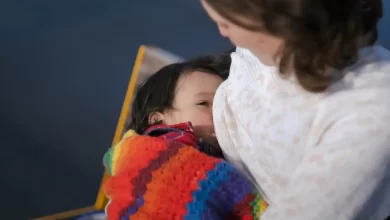Creating a Safe Home for Your Baby
Creating a Safe Home for Your Baby - Tips for Expectant Mothers
Welcoming a new baby into your life is a joyous occasion filled with anticipation and excitement. As an expectant mother, your priority is to ensure that your home is a safe and nurturing environment for your little one. Creating a safe home for your baby is important so read on!
While decorating the nursery is often the first step, baby-proofing your entire home is essential to protect your child from potential hazards. This guide will walk you through everything you need to consider to create a safe haven for your baby, both inside and outside the house.
Securing the Interior of Your Home
1. Anchor Furniture and Appliances
As babies grow, they become increasingly curious and mobile, exploring every corner of their environment. Heavy furniture like bookshelves, dressers, and televisions can pose a serious tipping hazard if not properly secured. Use furniture straps or brackets to anchor these items to the wall, ensuring they remain stable even if your baby tries to pull themselves up or climb. The same applies to large appliances such as refrigerators and ovens, which should be securely positioned to prevent accidents.

2. Install Baby Gates
Stairs can be particularly dangerous for crawling and walking infants. Installing baby gates at the top and bottom of staircases is a crucial safety measure. Choose gates that are securely mounted to the wall rather than pressure-mounted for added stability. Additionally, consider placing gates in doorways leading to rooms that may contain hazards, such as the kitchen, bathroom, or laundry room.
3. Protect Electrical Outlets
Electrical outlets are at an ideal height for curious little hands, making them a potential danger. Use outlet covers or plates that automatically snap shut when not in use to prevent your baby from inserting objects into the outlets. For even greater protection, consider installing tamper-resistant outlets, which require equal pressure on both plug prongs to access the electricity.
4. Remove Choking Hazards
Babies explore their world by putting objects in their mouths, making small items a significant choking risk. Go through each room in your home and remove any small objects, such as coins, batteries, buttons, and tiny toys. Pay special attention to areas where small items might be hidden, such as under furniture or between couch cushions. If you have older children, ensure their toys with small parts are kept out of reach from the baby.
5. Secure Hazardous Substances
Cleaning supplies, medications, and other toxic substances should be stored in locked cabinets, preferably high up and out of your baby’s reach. Even natural or “green” cleaning products can be harmful if ingested, so take no chances. Install childproof locks on cabinets and drawers in areas like the kitchen and bathroom to keep these dangerous items secure.
Want to learn more? Read: Tips For A Healthy Pregnancy
6. Softening Sharp Corners
Sharp corners on furniture such as coffee tables, countertops, and TV stands can cause injury if your baby bumps into them. To prevent accidents, install corner guards or padding on sharp edges. This simple precaution can turn a potentially dangerous situation into a minor bump.
7. Crib Safety Essentials
Your baby will spend a lot of time in their crib, making it essential that it meets the highest safety standards. Ensure that the crib slats are no more than 2 3/8 inches apart to prevent your baby’s head from getting stuck. Avoid using soft bedding, pillows, or stuffed animals in the crib, as these can increase the risk of suffocation. Instead, opt for a firm mattress and a fitted sheet.
Want to read about nurseries? Read: Benefits of Having A Nursery
8. Regulate Room Temperature
Babies are particularly sensitive to temperature fluctuations, so it’s important to keep their environment at a comfortable and consistent temperature. The ideal temperature for a baby’s room is between 68-72°F (20-22°C). A room thermometer can help you monitor this. Consider blackout curtains to block direct sunlight during the day and draft stoppers to prevent cold air from seeping in during colder months.
9. Install Smoke and Carbon Monoxide Detectors
Smoke and carbon monoxide detectors are critical for your family’s safety. Ensure that your home is equipped with functioning detectors, especially in key areas like bedrooms, hallways, and near the kitchen. Test the alarms regularly and replace the batteries at least once a year. For added peace of mind, consider a monitoring system that alerts you to any issues when you’re not home.
10. Childproof Your Windows
Windows can be a serious fall risk, especially on upper floors. Install window guards or stops to prevent windows from opening more than a few inches. Additionally, be cautious of window blinds with long cords, which can pose a strangulation hazard. Opt for cordless blinds or ensure that cords are securely tied up and out of reach.
Creating a Safe Outdoor Space
11. Secure Your Backyard with a Fence
While the inside of your home is crucial, the outdoor area also needs attention, particularly if you have a backyard. A secure fence is essential for keeping your baby safe while they play outside. This is especially important if you live in an area where stray dogs or other animals could potentially enter your yard. A well-built fence will not only keep unwanted visitors out but also ensure that your baby doesn’t wander off.
If you don’t already have a secure fence, or if your current one needs repairs, consider hiring a professional fencing company to assess and install a sturdy, child-safe barrier around your property. Professional installers can help you choose the right type of fence, taking into account factors such as height, material, and gate security. A well-constructed fence provides peace of mind, allowing your child to play safely outdoors as they grow.
12. Check the Yard for Hazards
Before allowing your baby to explore the yard, thoroughly inspect the area for potential hazards. Remove any sharp objects, toxic plants, or tools that could cause injury. Ensure that outdoor furniture is stable and doesn’t have any sharp edges. If you have a pool, make sure it’s securely fenced off with a self-latching gate to prevent accidental drownings. Additionally, avoid using chemical fertilisers or pesticides on your lawn that could be harmful to your baby.
Preparing for Emergencies
13. Be Ready for the Unexpected
Despite our best efforts to create a safe environment, accidents can still happen. Being prepared for emergencies is crucial. Keep a well-stocked first-aid kit in your home, including items specifically for infants, such as baby-safe pain relievers and antiseptic creams. Learn basic first-aid procedures for infants, such as CPR, and make sure other caregivers in your home are also trained.
Post emergency phone numbers, including your pediatrician, poison control, and local emergency services, in a visible location like the refrigerator. It’s also a good idea to have a plan in place for how to respond to various emergencies, whether it’s a fire, medical issue, or severe weather.
Ensuring a Safe Environment for Your Baby
14. Mind the Floors
Slippery floors are a hazard for both you and your baby, especially as they begin to crawl and walk. Use non-slip rugs and mats in areas where water might be present, such as the bathroom and kitchen. Regularly check that these rugs stay in place and don’t pose a tripping hazard. Additionally, keep floors clear of clutter to avoid trips and falls.
15. Practice Safe Bathing
Bathtime can be a joyful bonding experience, but it’s also a time to be vigilant. Never leave your baby unattended in the bath, even for a moment. Always test the water temperature before placing your baby in the tub to avoid burns; the ideal temperature is around 98.6°F (37°C). A baby bath thermometer can help you ensure the water is just right. Install a spout cover over the faucet to protect your baby from bumps and bruises.
Final Thoughts
Preparing your home for a new baby is a significant task, but taking the time to address potential hazards will give you peace of mind and ensure a safe environment for your little one. From securing furniture and installing baby gates to ensuring your backyard is a safe space for exploration, these steps are crucial in creating a home where your baby can grow, learn, and thrive. Don’t hesitate to seek professional help, whether it’s installing a fence or adding safety features like smoke detectors. Remember, no precaution is too small when it comes to protecting your child.




